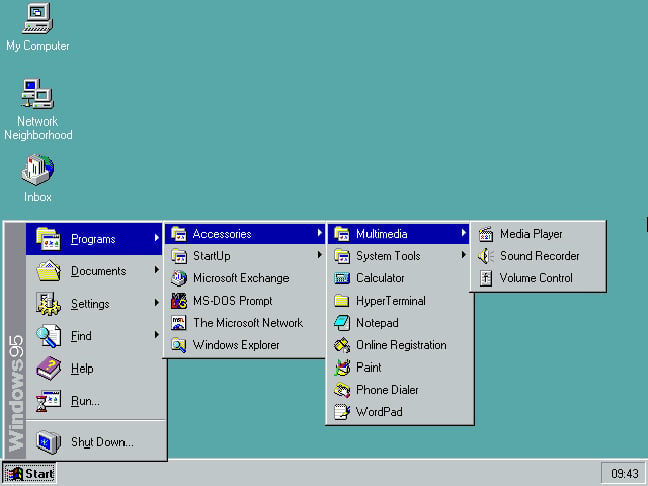
#WINDOWS 95 DESKTOPS PASSWORD#
In Windows 2000 (NT 5.0), the password encryption should be replaced with a much better algorithm.

Unfortunately, there isn't a solution to this with Windows 95/98. We should point out, however, that there is a small security risk: someone can steal the password file and decrypt the passwords because it's weakly encrypted. We won't worry about profiles for the moment we'll cover them in Chapter 6, Now when you connect to Samba, Windows will send its password, which will be used to authenticate you for each share. After confirming your new username and password, or if you already have one, Windows should ask you if you want to have a profile, using the dialog shown inĪnswer Yes, upon which Windows will create a separate profile and password file for you and save a copy of your password in the file. Give yourself the same username and password that you have on the Samba server. If you didn't have a Change Passwords tab in the Passwords Properties window, then after Windows has finished rebooting, it will ask you to log in with a username and a password.

Section 3.1.1.2, Logging in for the first time." Simply click the OK button at the bottom and respond Yes when Windows asks to reboot. If you don't have this tab in your dialog box, don't worry it's probably because you haven't given yourself a Windows username and password yet. In order for Samba to allow you access to its shares, the username and password you give to Windows must match the account and password on the Samba server. The next step is to select the Change Passwords tab on the left side of the dialog box. Finally, checkīoth the options under the User Profile Settings border, as shown in the figure.įigure 3.1: The Passwords Properties panel Then click the lower of the two radio buttons that starts "Users can customize their preferences." This causes Windows to store a separate profile for each user, and saves the username and password you provide, which it will use later when it connects to an SMB/CIFS server. You should see the dialog box shown inįigure 3.1. Alternatively, you'll find it as a folder under the icon in the upper-left corner that represents your computer and is typically labeled My Computer.Īfter selecting the Passwords icon in the Control Panel, click on the User Profiles tab on the far right. If you are not familiar with the Windows Control Panel, you can access it by choosing the Settings menu item from the pop-up menu of the Start button in the lower-left corner of the screen. We do so via the Password settings in the Control Panel. The first thing we need to do is to tell Windows to keep user profiles separate, and to collect usernames and passwords to authenticate anyone trying to access a Samba share. The final section provides some prerequisite information on how SMB connections are made from Windows clients and servers, which is useful as we move into the later chapters of the book. The first section covers setting up Windows 95/98 computers while the second covers Windows NT 4.0 machines. This chapter is divided into three sections.
#WINDOWS 95 DESKTOPS HOW TO#
Once these two requirements have been taken care of, we can show how to access a shared disk on the Samba server. Then you'll need to configure your Windows machines to operate on a TCP/IP network.

#WINDOWS 95 DESKTOPS INSTALL#
If you aren't already using TCP/IP on your Windows computers, this chapter will show you how to install it. Samba uses TCP/IP to talk to its clients on the network.

The primary issues that we will cover in this chapter involve communication and coordination between Windows and Unix, two completely different operating systems. SMB is Microsoft's native language for resource sharing on a local area network, so much of the installation and setup on the Windows client side has been taken care of already. You'll be glad to know that configuring Windows to use your new Samba server is quite simple.


 0 kommentar(er)
0 kommentar(er)
